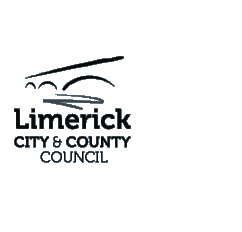“Successful public realm schemes employ collaborative design processes with local actors to manage changes in the built environment of places.”
When it comes to improving the quality of market squares in Irish towns it is worthwhile looking to the past to provide direction for how we might accommodate change for the future. Market squares in Ireland historically acted as multi-functional spaces for economic and social activity. They were squares for exchange of goods, as their name implies, but also public spaces for the exchange of ideas, for debate and protests. As any historical photo will illustrate, they accommodated events and celebrations, performance, togetherness and belonging. As the statues and plaques erected in market squares attest, they were places of history and memory. As the natural life in these photos often reveal, they were places for animals as well as people, places for landscape and water as well as iron and stone. They facilitated, somewhat by the way, space for movement of people and traffic of all kinds.
It is not controversial to note that, in modern small town market squares, that list of priorities has altered dramatically from the days when they were the centre of life in rural Ireland. The dominance of provision for the movement of vehicular traffic, the fittings that control and enable that flow, and the space to store stationary vehicles, have taken precedence over all other historical functions of town squares. Consequently, both the variety and frequency of use for community interaction are much more limited today. The decision making about how market squares are shaped and utilised has also changed. In the case of the towns in the Free Market exhibition, the squares were planned or designed as part of a town plan. In Ireland today, town squares rarely benefit from the oversight or involvement of an urban designer. More usually, changes to the built form of these squares are purely as a response to the control and regulation of the movement of traffic. This approach has prioritised the movement function of the space over its place function. Occasionally, the focus is on bicycle movement, public transport and accessibility of the built environment to people with reduced mobility. A people-centred approach to the design of these environmental and community resources is rare. Even the government's introduction of a new, urban design friendly ‘Design Manual for Urban Roads and Streets’ in 2013, with mandatory application in towns and villages, has not made a significant impact in improving this situation.
One explanation is that the funding streams for ‘upgrading’ these spaces or, more specifically the roads which traverse the market squares, is allocated from the Department of Transport, Tourism and Sport for traffic improvements. Funding is funnelled to local authority engineers responsible for traffic management. Where urban design and landscape architecture disciplines are included in the design teams, they are often not the thought leaders for the project, because the funding is allocated to solve traffic problems. Architects, where they exist in local authority structures, are not traditionally involved in roads infrastructure schemes in towns. In some cases, funding comes from a Smarter Travel budget – which focuses on public transport, cycling and alternatives to private car use – again, movement infrastructure. Sometimes funding is allocated from an accessibility or safety improvement point of view and these focus on pedestrian use and navigability by those with disabilities. But in these situations, pedestrians are considered in terms of their interaction with traffic.
Urban and Village renewal schemes which have generally been funded by the Department of Arts, Heritage, Regional, Rural and Gaeltacht Affairs (now the Department of Culture, Heritage and Gaeltacht) have had much greater success in achieving a more holistic approach to the quality and use of these spaces. More diverse design teams lead the project from a wider perspective and usually are led by architects, urban designers and/or landscape architects. These projects, when funded through Heritage or the Arts, are understood to be significant to the cultural and economic life of the town. But the proportion of funding allocated through these streams is small in comparison to the overall money spent on civic space improvements through the roads budgets. Where a cross disciplinary, place-based approach has been employed, public service architects working with local area engineers have managed to combine or supplement infrastructure projects to include a public realm improvement, for example in the case of repairs or upgrading of waste water pipes after flooding incidents. Enlightened local authorities seek added value to their infrastructural projects to double up essential repairs or upgrades with new spaces for civic amenity and economic activity. There is reason to be optimistic that this approach will become more common due to the acknowledged success of public service architect led, careful public realm design in towns such as Westport, Castlebar, Clonakilty and in Waterford City to cite a few examples.
Funding timeframes are another factor which mitigate against holistic design approaches. Public realm capital works projects, to a large extent, happen within a one year time frame which doesn’t allow time for an extended period to develop strategies, to work with communities through an iterative and inclusive design process, and to enable their realisation within that tight period. The fact that funds for making substantial alterations to civic space in Ireland are available to local authority operational teams through sectoral/departmental funding mechanisms (ie. Roads, Housing, Access, Smarter Travel, Urban and Village Renewal Schemes etc.) rather than being allocated on a place based approach, is an obstacle to enabling a coordinated, cross departmental commitment.
If we are to reclaim the ‘generosity, humanity and possibility in the common spaces of Ireland’s market towns’, as implored in the theme of the Irish Pavilion we must involve people directly from the start in the design, use, operation and maintenance of their public space. Design of successful public realm schemes employ collaborative design processes with local actors to manage changes in the built environment of places. Good urban architecture distinguishes itself from merely building as a human social art. It is a force for repairing the fabric of the human community and the natural world. As a social art, urban design must effectively reflect the values and needs of society. These can only be understood through effectively engaging with locals to determine the use and character of their shared space. Public servants working in public space have a responsibility to develop an understanding of the design of public space, not just as a regulatory problem, but as an opportunity to facilitate collective action for the public good. From the point of view of local government, it is increasingly difficult to find a structure within which urban designers can operate. A lack of time, as well as bureaucratic constraints, are making long-term collaborations with local communities and cross disciplinary working quite challenging. One of the challenges to place-making today is the absence of a coordinating framework for design activity. That absence is felt both at the top and from the bottom. Top-down, it is increasingly difficult to find a place for urban design professionals within local government structures. Simultaneously, local, amateur and professional input (bottom-up contributions) are being disabled, due to increasingly onerous statutory and regulatory systems. An approach to solving complex urban problems centred on facilitating, enabling and supporting local communities involves, primarily, an investment in time and human resources over monetary investment. In fact, the biggest dangers to participatory design processes are the imperative to spend money quickly, without sufficient time to allow co-design solutions to emerge, as well as underinvestment in supporting dedicated urban designers to facilitate and coordinate community involvement. The emphasis must be on the value of design processes in facilitating, managing and enabling holistic change in the retrofitting of our public spaces. The interdisciplinary nature of development and the increasingly bottom-up functioning of democracy has brought about a new model for urban management of civic space which involves, at its heart, cooperative design methodologies to guide the shift from the institutional to the collaborative model of decision making, and to facilitate the cooperative design of the built environment of places.
Joined-up thinking is called for in the re-design of public spaces.
The most important outcome of involving architects in the design of public spaces are the networks and trust that are built up through collaborative design processes, which allow public service architects and urban designers, as well as representatives of the residents and businesses in towns, to have an extended public conversation about the future of their town. These conversations must also be open to civic activists, socially engaged artists, the maker community, industry partners and anyone interested. Participatory design processes act as a framework to connect the aspirations of the community to the imagination and innovation of the design professionals and other local actors. This framework offers a route back to the future for the public spaces of our small towns, back to ‘a space for opportunity, a democratic space, an unprogrammed and free of uses not yet conceived’ space.
Rosie Webb is Senior Architect and Head of Urban and Village Renewal in Limerick City and County Council






















